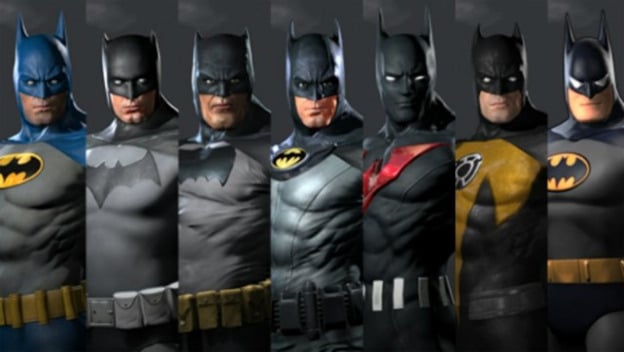Just when you thought you were done, they pull you back in…with DLC.
It’s strange to think about just how different we approach our games today than we did 10 or 15 years ago. I’m sure we all remember those fun weekend trips to the video store. We’d spend what felt like hours (probably to our parents anyway) perusing the game section, just to find that one awesome title that would hold us over until we’d have to hit the books again on Monday. Let’s not forget birthdays and Christmas, when we were fortunate enough to get those new titles that our parents expected us to play till the following holiday without getting bored.
Back then, you didn’t really have the option of extending the life of the game beyond what its initial release would give you. Some games, whether due to them being ridiculously short or just terrible, would get relegated to the bottom of the stack where it would collect dust until ending up in a yard sale. Other games didn’t need the hopes of DLC down the road to keep gamers interested. Take Super Mario World for example. To this day, it’s still an unbelievably fun game, and it’s certainly in most gamers’ list of top five Mario games. Why? Well, the scope of the game is huge; it literally feels like its own world . Even though DLC wasn’t even on the radar then, Nintendo packed so much content into one title that it was almost worth the price of two games.
So, how have things changed as we’ve shifted our gaming into the “digital age?” DLC, believe it or not, is still a semi-new idea. Although it got its start during the time of the Xbox and PlayStation 2, the idea of digital content continuously being fused into our games after their release didn’t really blow up till the current-gen of the 360 and PS3.
The current generation of consoles, in many ways, opened Pandora’s box. Think of it this way. You’re a video game executive, sitting in a boardroom, and someone pitches you a game idea. You then look at the concept and say, “I like everything you’re showing me, but we’ll take that part there, split it off, and force them to purchase it separately.” This is where it feels like the concept of DLC, for some games, goes from being a nice add-on after the fact, to a complete ripoff that should have been included in the first place.
How many times have you waited for DLC to be released for your favorite game? You go on Xbox Live or the PlayStation Network and download what you think will be a huge map pack or skin file. Instead, when you click the item, it snatches a file that’s just a few kilobytes in size almost instantly. The reason why is…you’ve just been hosed. You didn’t actually download the DLC; you just downloaded a software patch that unlocked content that was already in the game. That’s right, you had it the whole time on the disc, but the developers decided to hide it from you and force you to pay for it.
Speaking of pay, let’s touch on the pricing of these little gems.
Many will remember the infamous horse armor incident of Elder Scrolls IV: Oblivion . Bethesda decided to charge an exorbitant fee for a ridiculous trinket that many felt should have been available freely in the game. Note that we’re not talking a Master Sword of Tri-Force here, we’re talking horse armor, as in armor FOR YOUR HORSE.
So, this begs the question; how do you do DLC right?
The answer to this, I feel, is simple. DLC should be something that gamers can see adding to the value of their already-purchased game. It should be something that will build on the experience, not something that feels like developers are holding gamers hostage because they’re not giving them access to key components of the world–especially if these components affect the overall gaming experience.
If you’re a Halo fan, you’re probably no stranger to downloading map packs. Bungie never made you purchase your Assault Rifle or Plasma Pistol, instead reserving their DLC for fun little extras (outside the main experience) that you could either purchase or pass on if you wanted. They didn’t nickel and dime you for things that should’ve been included in the game from the jump.

The Batman: Arkham franchise is also a good example of DLC done right. The new Origins game, due out in October, will offer a season pass for $19.99 that will give you extra skins, bonus missions, and challenge maps outside the scope of the regular game. However, some gamers have been critical of the extra $20 price tag on top of what they’ll already have to pay. I’m thinking a $15 price point would have been an easier sell. It is important, however, to remember that with games such as Batman: Arkham Origins (and Arkham City/Asylum before that), you’ll be given 100% of the game experience right from the disc the day you buy it. All the fun little extras after the fact are just that, EXTRAS–little enhancements that gamers can choose to take or leave without dipping into the meat of the game itself.
So remember, game developers, DLC should be the icing on the cake, not the cake itself. I really don’t want to have to start buying my batarangs one at a time.
